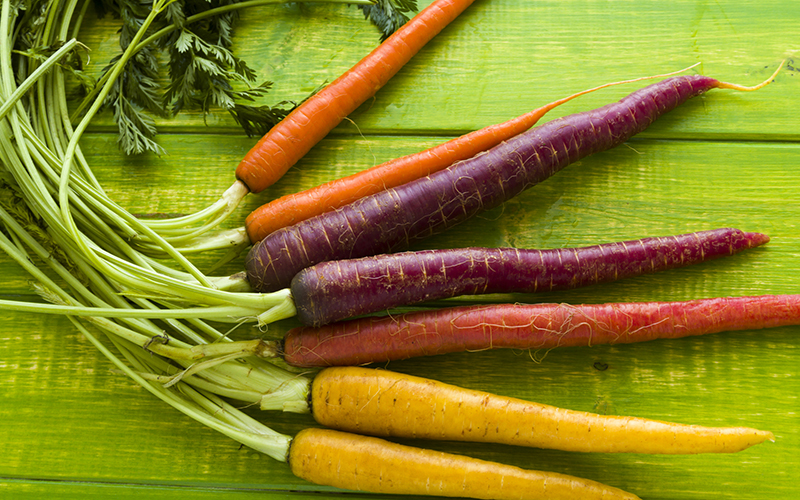
by guest blogger Caroline Praderio, food and nutrition writer for Prevention magazine and EatClean.com
Most of the time, we’re telling you that eating healthier means you’ll need to do a bit more work, e.g. cook more meals at home, DIY your own almond butter, scour every food label. So this will come as a welcome change: Put down the peeler and stop removing the edible skins from your fruits and vegetables. The colorful peels on the outsides of your produce are often the most concentrated source of vitamins, minerals, and antioxidants.
Now, this doesn’t mean that all the nutrients are located in the peels alone—experts point out that when you peel a tomato, for example, you won’t lose much of its beneficial lycopene. But there are some peels that offer a unique benefit independent of the fruit or vegetable flesh. Here are 6 you should know about.
1. Apples
Taking off an apple peel won’t rob you of much vitamin C, but you will lose out on pectin, a soluble fiber that can help keep you regular and lower your “bad” LDL cholesterol and blood sugar. Pectin also slows digestion, helping keep cravings at bay.
2. Carrots
Carrots are rich in compounds called polyacetylenes, and preliminary research is investigating their potential to kill human cancer cells in test tubes. They may have antifungal, antibacterial, and anti-inflammatory effects, too. But these compounds are concentrated just beneath the skin—so either leave your carrot skins on, or go easy with the peeler and remove only a thin strip.
3. Potatoes
Gram for gram, potato skins have more fiber, iron, and folate than potato flesh. Choose deeply pigmented purple potatoes and the skin becomes even more important: One study found that the skins of these potatoes contained 5 to 10 times more antioxidants than the flesh.
4. Cucumbers
Peeled cukes have less calcium, magnesium, phosphorous, potassium, vitamin A, and vitamin K than their fully intact counterparts. Plus, nearly all of cucumber’s fiber comes from the peel—the inner flesh is mostly water.
5. Eggplant
Eggplant skin is packed with an antioxidant called nasunin. The compound hasn’t been extensively researched on its own, but one animal study suggests that it could be important in maintaining healthy brain tissue. (Try Maria Rodale’s eggplant parmesan recipe.) Plus, nasunin is part of a larger family of antioxidants known as flavonoids—and the more flavonoids you eat, the less likely you are to gain weight over time, according to research.
6. Grapes
You’ve probably never peeled grapes in your life, and don’t start now. The skins are where you’ll find all of red grapes’ resveratrol—the phytochemical that seems to benefit heart and brain health, and that’s been shown to slow cancer growth in cell and animal studies.
(Note: When you’re making a point of eating peels, try to go organic—organic production forbids the use of pesticides and herbicides that can linger on fruit and vegetable skins. Check the EWG’s Dirty Dozen list to know when it’s most important.)
 Caroline Praderio is the food and nutrition writer for Prevention magazine and EatClean.com. A native of Massachusetts, she’s a graduate of Emerson College and a winner of two International Regional Magazine Association awards. When she’s not writing, she loves to read, cook, and rehearse with her dance company.
Caroline Praderio is the food and nutrition writer for Prevention magazine and EatClean.com. A native of Massachusetts, she’s a graduate of Emerson College and a winner of two International Regional Magazine Association awards. When she’s not writing, she loves to read, cook, and rehearse with her dance company.
Adapted from a story originally published on EatClean.com.




No comments yet.